
Adventures in Airbrushing
Avoiding common airbrushing problems - and an Orc!!
So, for my brief hobby time this weekend I made a start on an Atlantis Miniatures Orc. These are beautiful models, but they are a challenge, as you can see when pictured nest to a nurgle marine from the dark millennium box, they are quite small compared to the ’28mm’ that are really 32 or 35mm models that many companies make today.
That makes this quite a delicate job to paint effectively, and you want your airbrush to deliver paint smoothly even at very low pressure and close up. If its spitting or anything like that you get a horrible finish. So, given practically everyone who uses an airbrush will have had that kind of problem at some point, uneven spray, spitting or paint stops coming out altogether, I’ll try and show how you can avoid all that easily and cheaply.
First lets look at the model itself and the paints we are using today.
Those colours are:
Hexed Lichen from the vallejo game color range. Its what I had to hand, any purple will do to shade green.
Green Zinc Chromate from vallejo model air, again, this is a green I just like.
Dead Flesh from the vallejo game air set.
Here below is the three mixed i used.
The first is a 2:1 mix of the green and the purple as a shade colour.
The second is the green with just a drop of the dead flesh
The third is significantly lighter, a 1:1 mix of dead flesh and the green
Now, spraying an airbrush really is easy. I’m not artistic in any way, and I never have been. I am ok with a brush but it is a struggle, my hands are not steady enough most of the time, and even I can do alright with an airbrush, so i know you can too!
The biggest issues I often hear is that paint spits, or the nozzle is always blocking, so no paint comes out, or the paint comes out unevenly. There are various causes for these, but the vast majority of issues are caused by having impurities in the paint.
You will notice that my paint is in a little shot glass. I buy them off ebay or amazon, £3 for 100 plastic shot glasses. I ALWAYS mix my paint in one of those before I put it in the airbrush, even if I using paint straight out of the bottle, such as the green, I put it into a shot glass first and add a touch of thinner or flow improver. Doing this, I very rarely have any issues with paint spitting or other blockages, and I’ll explain why.
The most common paint impurity is in fact, paint itself! Yes, I know that sounds silly but here me out. Dried paint, that crusty bit around the top of the bottle, it flakes off as you pour. Even on dropper bottles like vallejo, if you don’t clean the nozzle, you can end up with crusty paint around the top, so if you put your paint straight into the paint cup on the airbrush, those tiny crusty bits go with it.
At the business end of the airbrush tolerances are really tight, the needle can be 0.35mm wide, my inifinity in the picture has a 0.2mm needle, I even have a 0.15mm needleset for that airbrush for doing really fine work (you can fit completely different needles of all sizes into Harder and Steenbeck airbrushes, its one of their advantages). With such small openings, it doesn’t take much to block them, and those tiny bits of crusty paint are usually the cause.
By using a cup first, mix the paint, thinner, flow improver or whatever, you can leave it to settle and then decant from there into the airbrush carefully, leaving any crusty bits at the bottom of the cup rather than in your airbrush.
If I were to give one piece of advice that can make all the difference in your aurbrush experience, it is this, use a cup to mix in, rather than dump paint straight from bottles into the airbrush itself.
Anyway, back to the model. Here are some images of the various stages, first the dark purply mix, then green, then the lighter colour. Remember, this is all just airbrush, nothing else yet. It took maybe 15 minutes including letting paint dry and mixing up the various colours to do this.
That is all for now, hopefully I will get time this week to do the brushwork on this model and show how airbrushing can be a great base for brushwork and give a faster finish to your model.









































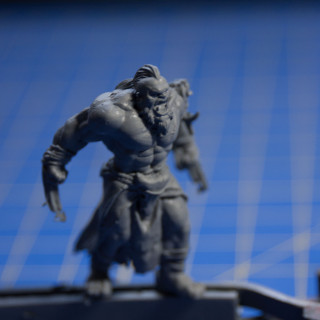
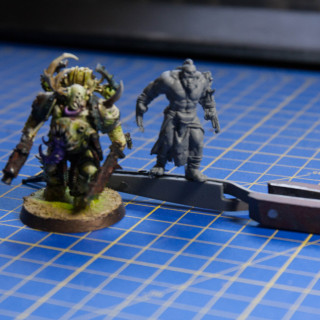
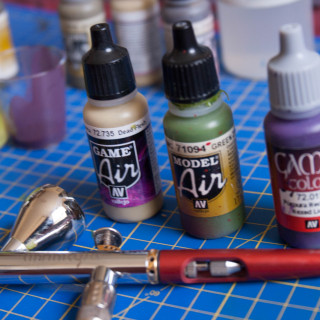
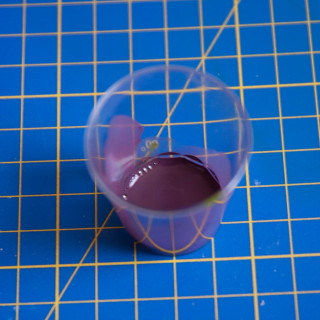
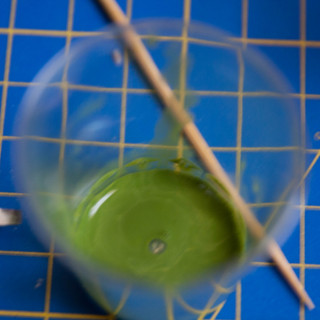
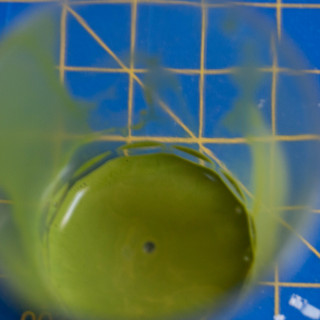
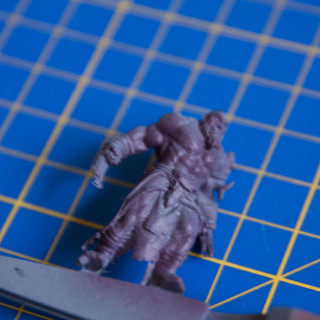
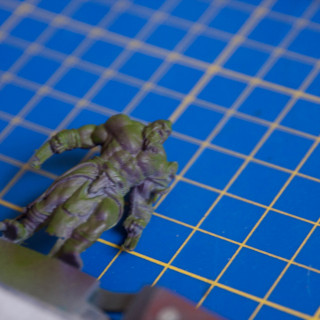
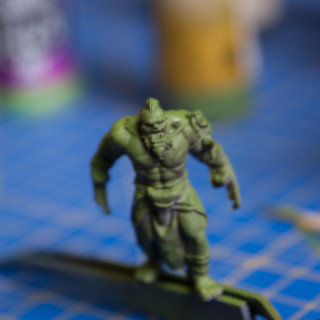
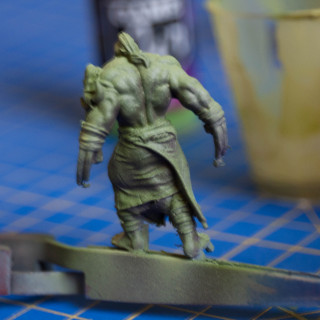



































Leave a Reply